Minecraft Biomes are an integral part of the game. A Biome in the game refers to a region that can be distinguished based on the environmental and geographical appearance of its landscapes. For example, humidity, snowy, floral, desert, etc. Every time there is a game update, Minecraft fans are overjoyed to check out the new environment and features they can explore.
In this guide, we will breakdown all different Minecraft Biomes into categories, so that it is easier for you to understand the meaning and uses of each of them.
Minecraft Biomes Guide for Beginners
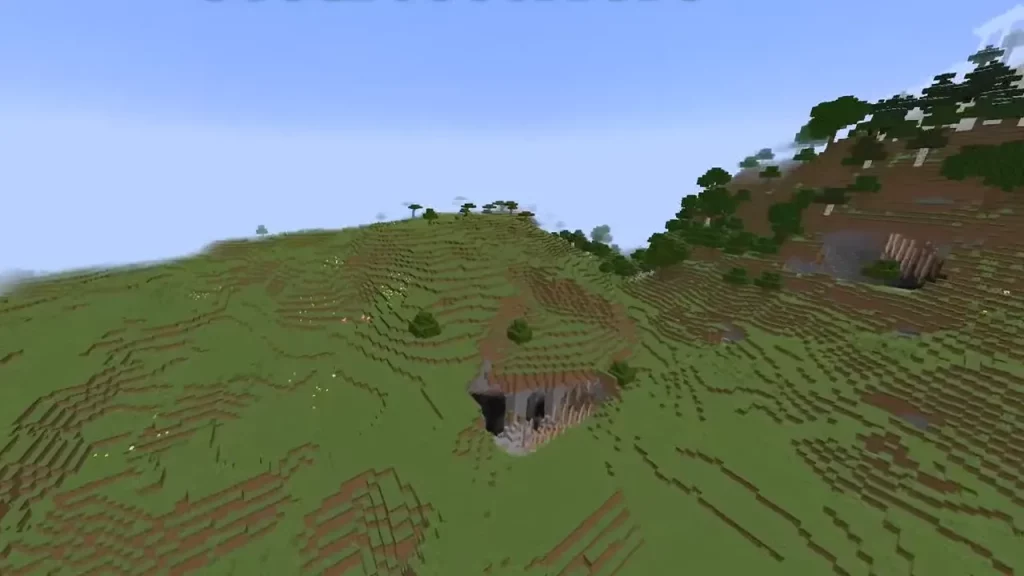
What are Biomes in Minecraft?
Biomes are regions that have particular geography, flora and fauna, temperatures, and other environmental factors. So if you wish to get to a specific plant, mob, item, block, and more, you will have to visit a biome that has those elements. Do note that mobs can be either passive, neutral, or even hostile so if you are planning a journey, make sure to be informed about that Minecraft biome beforehand.
Plains
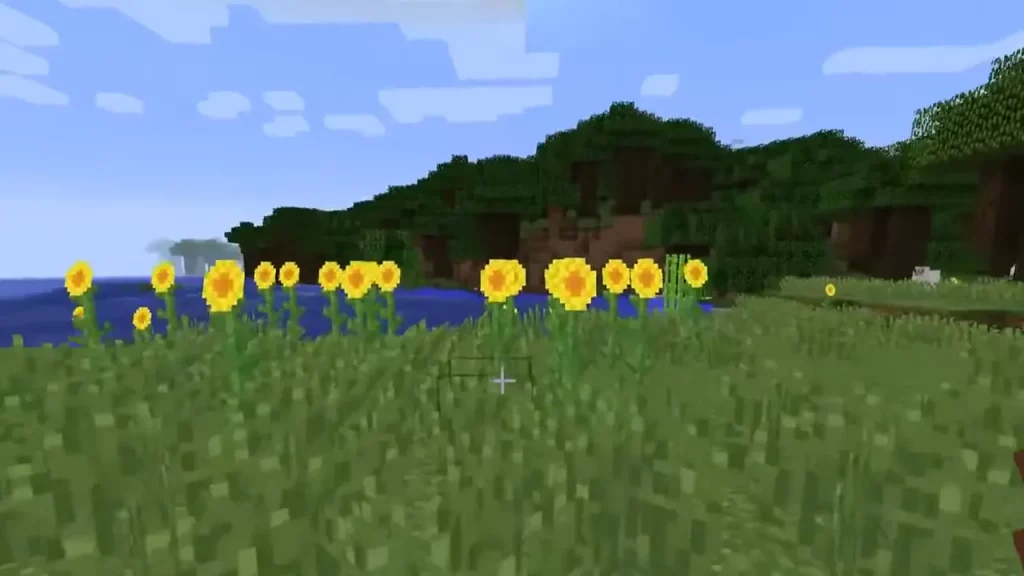
Plains are considered to be the most basic biome, in the game. It usually consists of bees, pigs, horses, cows, etc. You will also be able to spot villages and other NPCs here. Plains also have other variants –
- Sunflower Plains: As the name suggests, you can get an ample amount of sunflowers here. It can also be used to obtain yellow dye. The other features of this place are quite similar to Plains.
- Ice Spikes Plains: This variant is not the best when it comes to plant-like. The name ‘Spikes’ comes from the fact that all the things present in this biome are frozen. Almost anything you can find here will be covered in a thick layer of ice.
Forest
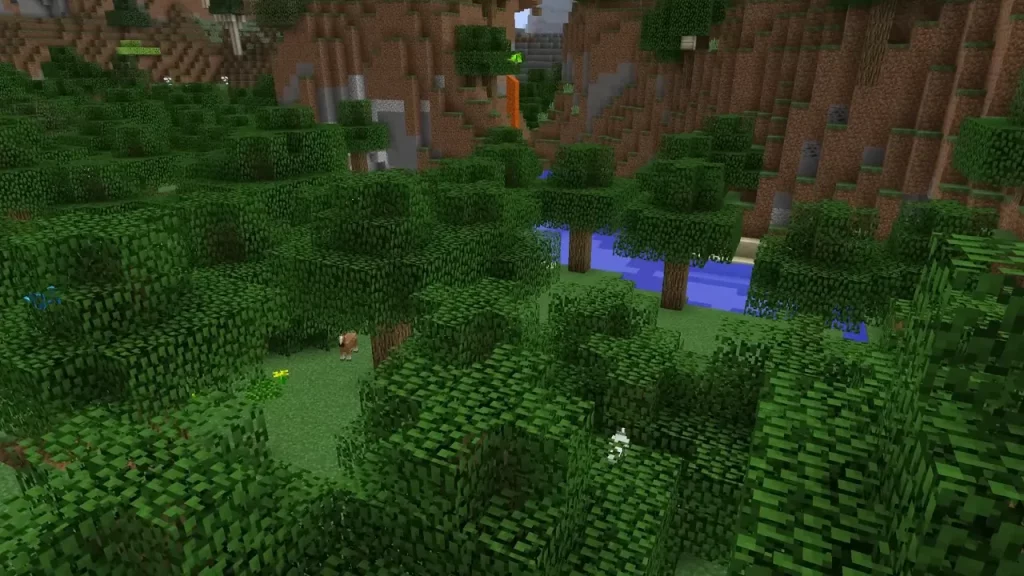
The forest biome can help you get an initial boost in the game, as you can harvest plenty of wood, mushrooms, grass, and even flowers, right here. Although it is considered to be one of the smallest biomes, it is quite resourceful. The only negative aspect of this biome is the trees make it difficult to spot any hostile mobs. Forest can also be further divided into:
- Birch Forest: This biome includes birch trees and is the main resource you can find here. Due to its hilly terrain, the Birch trees are considerably taller.
- Flower Forest: This area is known for the different species of Flowers available. You will also find a few oak trees scattered around here.
- Windswept Forest: Here, you can find spruce trees and oak trees, as well.
- Old Growth Birch Forest: The special feature of this biome is that it consists of old and tall birch trees.
- Dark Forest: In this biome, you can find dark oak trees. Additionally, you will also be able to find mushrooms here. You will have to always stay alert, hostile mobs randomly spawn here.
Swamp
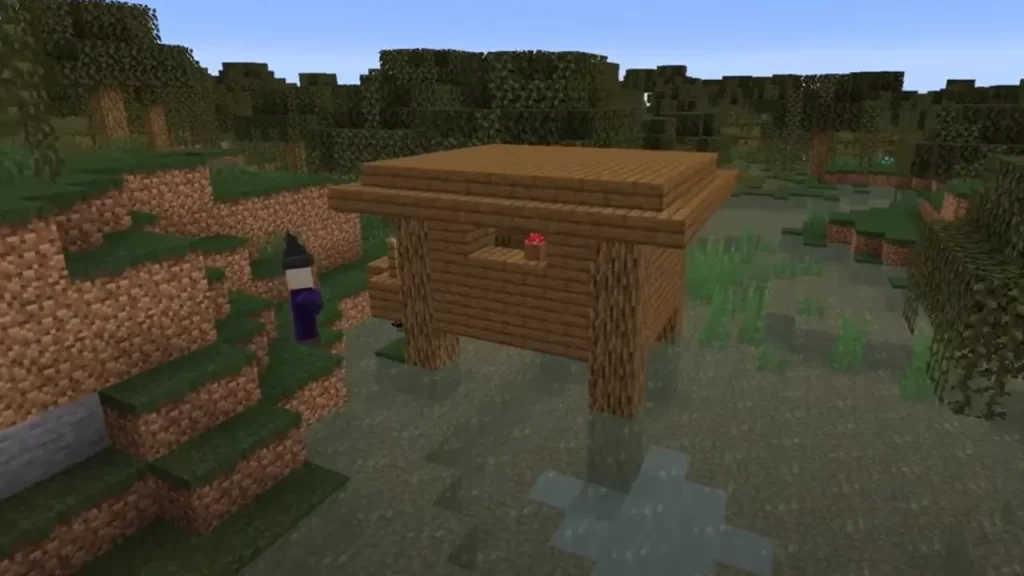
This Biome consists of discolored grass and water. Since it is a swamp, you can also find lily pads, clay, vines, seagrass, and fossils. The only striking feature of this area is the witch hut and a black cat that spawns here. This biome can be dangerous, especially during a full moon, as witches and hostile mobs suddenly appear.
Taiga
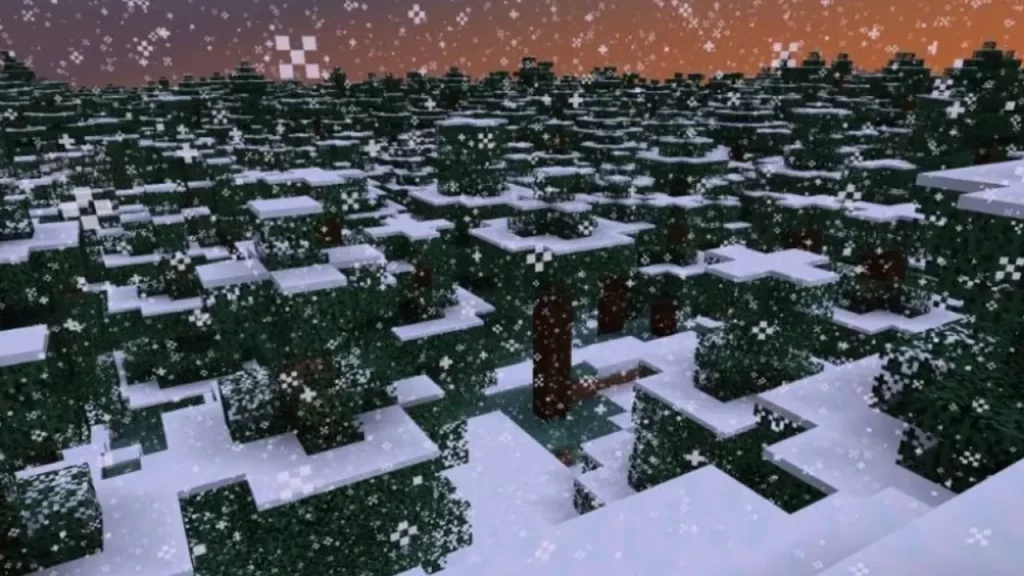
Taiga is considered to have an incredibly hilly terrain. The flora and fauna in this biome are easily accessible and consist of dense forests and jungles. You can also find foxes, wolves, sweet berries, villages, and bushes. This biome is also covered in spruce trees and fern growth. Some of its variations are –
- Snowy Taiga: You can find wolves in this biome. Spruce wood, can also be found here. This biome consists of snow and ice, that covers everything, including spruce trees and ferns.
- Old Growth Pine Taiga: This taiga variant is known for its tall and old pine trees. You can also find mossy cobblestone boulders and mushrooms, here.
- Old Growth Spruce Taiga: Although this biome might look identical to the old-growth pine taiga, it is said to have gigantic spruce trees.
- Old Growth Taiga: As the name suggests, this biome is known for having trees that and old and large.
Badlands
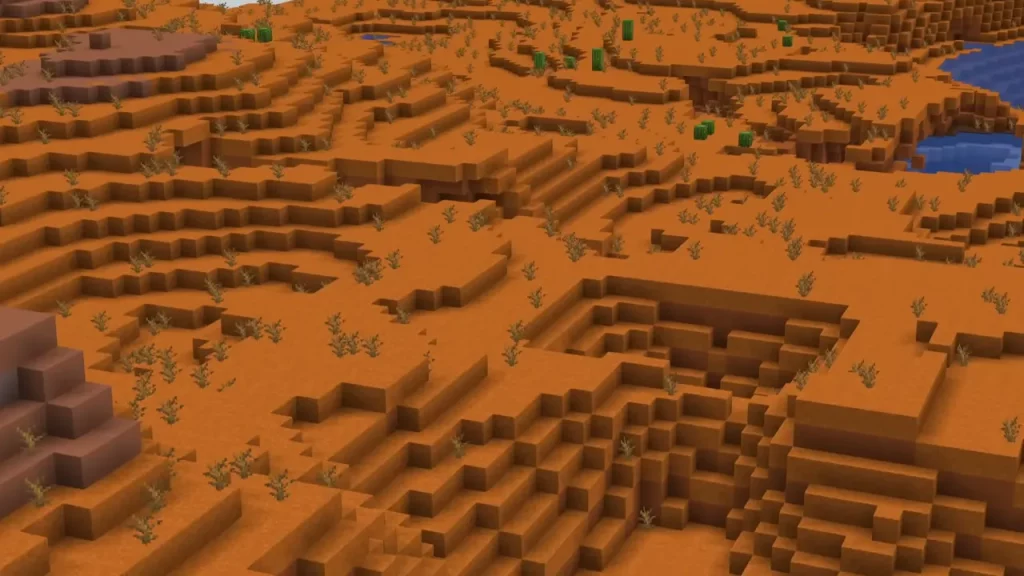
These biomes mostly consist of red sand, different-colored clay, terracotta, and even gold. You will find much greenery here, except for the cactus. Other than these resources, under the surface of this biome, you will occasionally find mineshafts. Badlands can be subcategorized into –
- Eroded Badlands: This biome consists of terracotta, that are slim and tall in shape. This terrain is usually covered in red sand.
- Wooded Badlands: This variant is mostly known for having discolored grass, oak trees, and dirt. It appears to be very dry and humid.
Beach
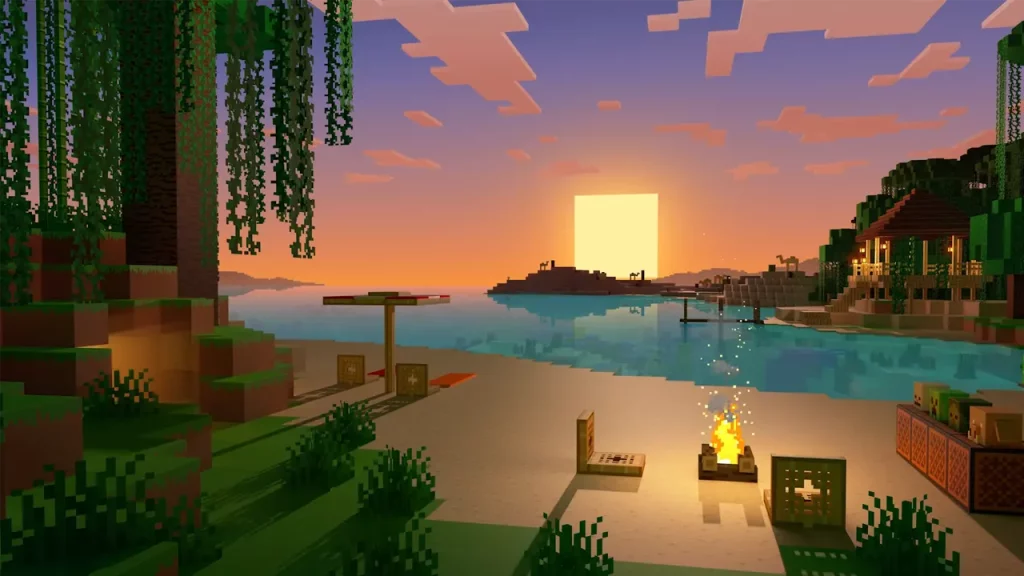
In comparison to the Badlands we just covered, this biome has the basic structure of a real-life beach, where the ocean water meets the dusty sand. You can take advantage of the beach biome by fishing and looking for buried treasure. Other than these features it also has two subcategories:
- Snowy Beach: You can only worry about protecting yourself from snow as no other hostile mobs spawn here. Although it has similar features to the beach biome, everything here is covered in a layer of snow.
- Stoney Shore: When the mountains meet the ocean and the majority of the land is covered in stones instead of sand, you have entered the Stoney Shore. Similar to the beach biome, you will not find any mobs here.
Desert
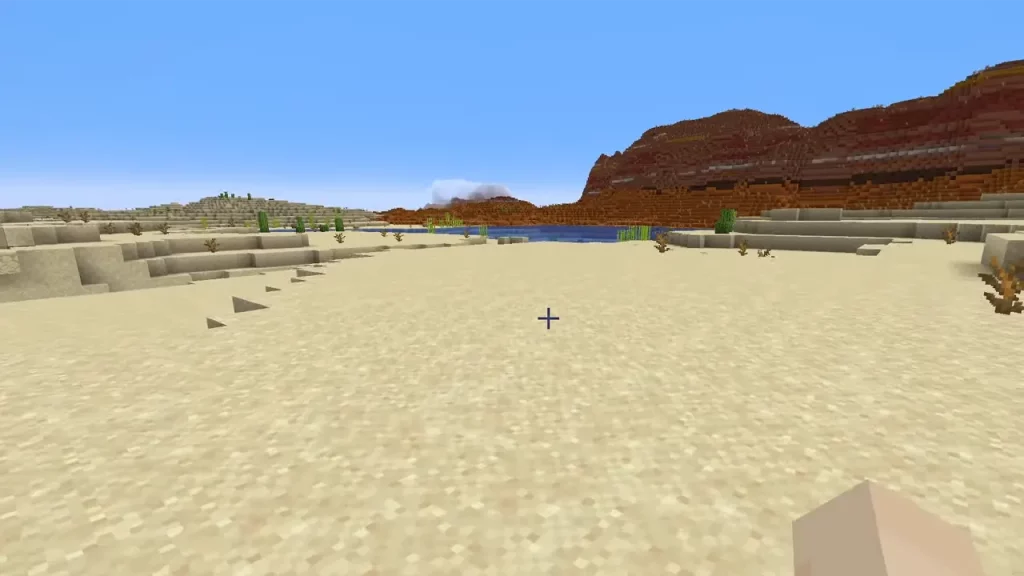
The desert biome consists mostly of sand and this place is considered to be one of the rarest biomes, in the game. You can visit this place if you need to go to the desert village, dessert wells, dessert temples, or even if you are looking for cacti. Mostly you will find camels here. The rabbits that spawn are not white but sand-like in color, so they can be overlooked easily. However, at night few hostile mobs do spawn but they are comparatively easy to spot and you can fight them off. You can also use the new upgrade which consists of special archaeological features. It also has another variant:
- Desert Lakes: There is only one difference in this variant, as compared to the desert biome and that is the dry and rough land also has uneven patches of water.
Cherry Grove
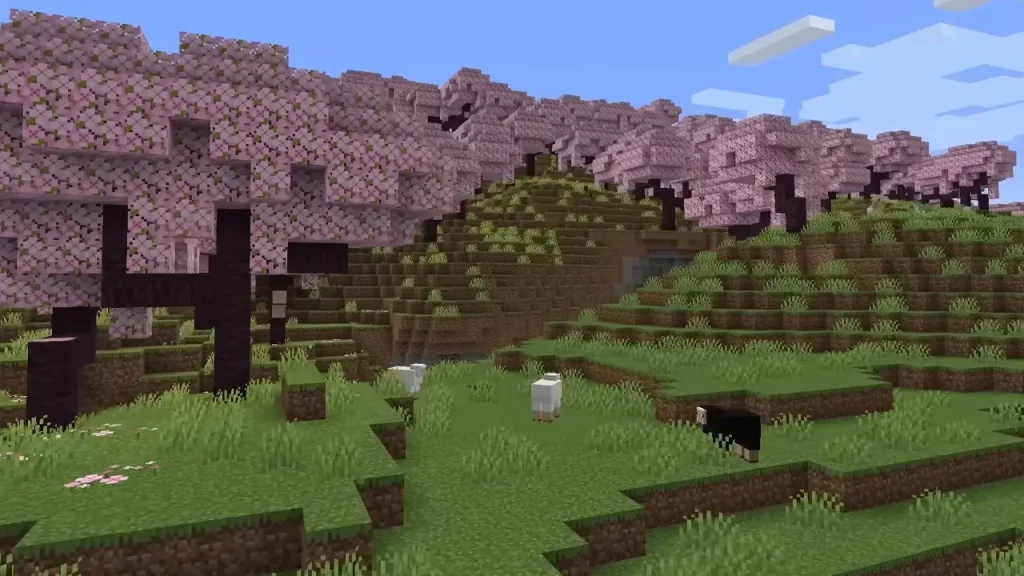
This biome is one of the newest additions to this game. The Cherry Grove consists of beautiful cherry blossom trees. The pink flowers on the trees and petals on the ground add to the aesthetic value of the game. It is also a very resourceful place, as players can use the cherry wood to make various items.
Snowy Tundra
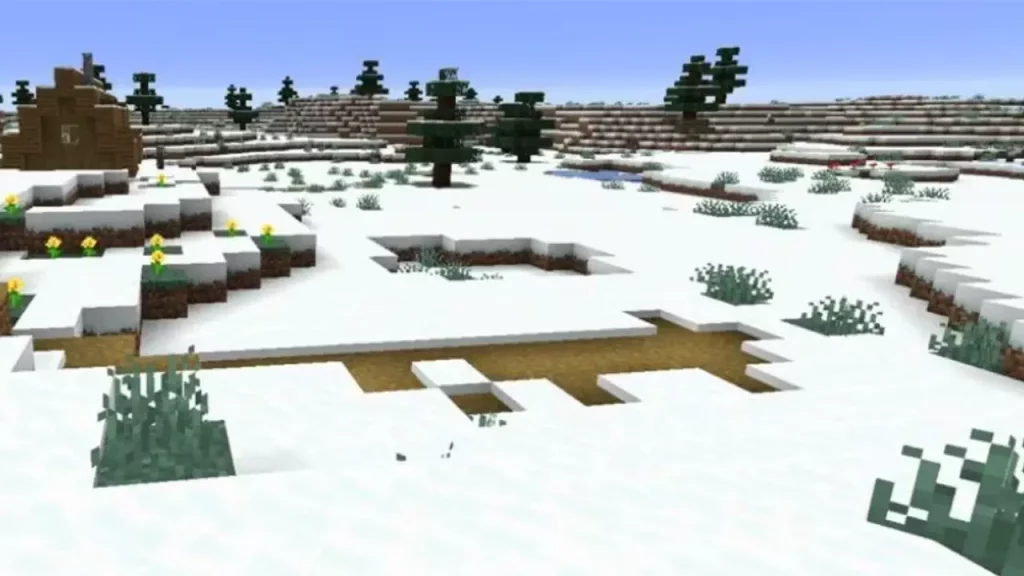
Similar to the Snowy Taiga, a variant of Taiga, this biome consists primarily of snow and ice blocks. As the name suggests, there is snowfall instead of rain. In this biome, you can find wolves and spruce trees.
Jungle
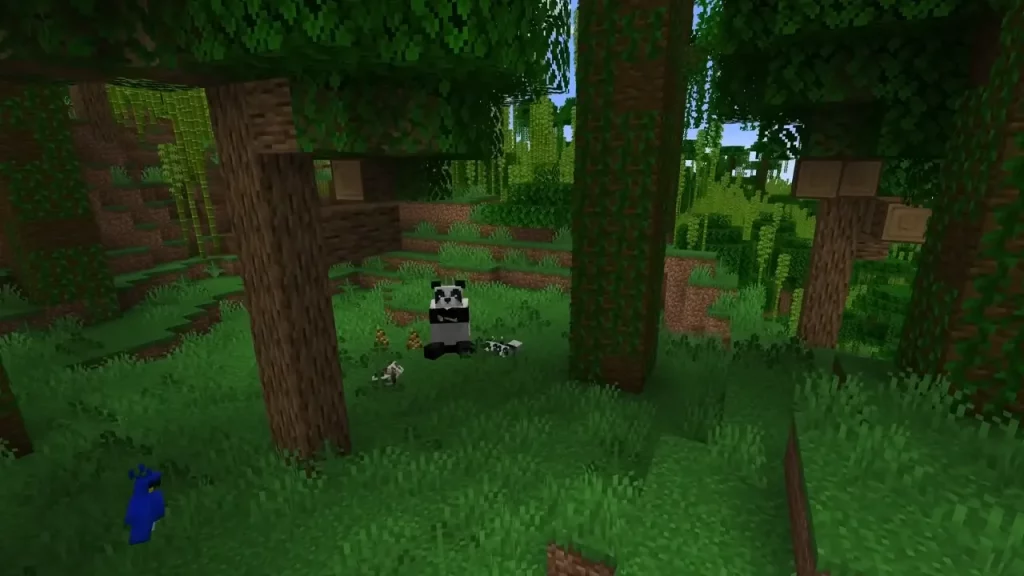
This biome is considered to be a ‘better version’ of the forest biome, with green and tall trees, that remind you of a tropical rainforest. Some of them are even considered to be higher than 30 blocks. Exploring this landscape can prove useful as you find a ton of resources here including vines, melons, cocoa, oak trees, etc. You can also find ocelots, parrots, and pandas. It also consists of two other variants –
- Sparse Jungle: Although It is not as lush, it is known for mobs like parrots, pandas, and ocelots regularly spawn here.
- Bamboo Jungle: This variant is much more abundant in bamboo trees and scattered patches of podzol. Once again there is a high spawn rate when it comes to pandas and ocelots and additionally, you can also expect jungle pyramids.
Caves
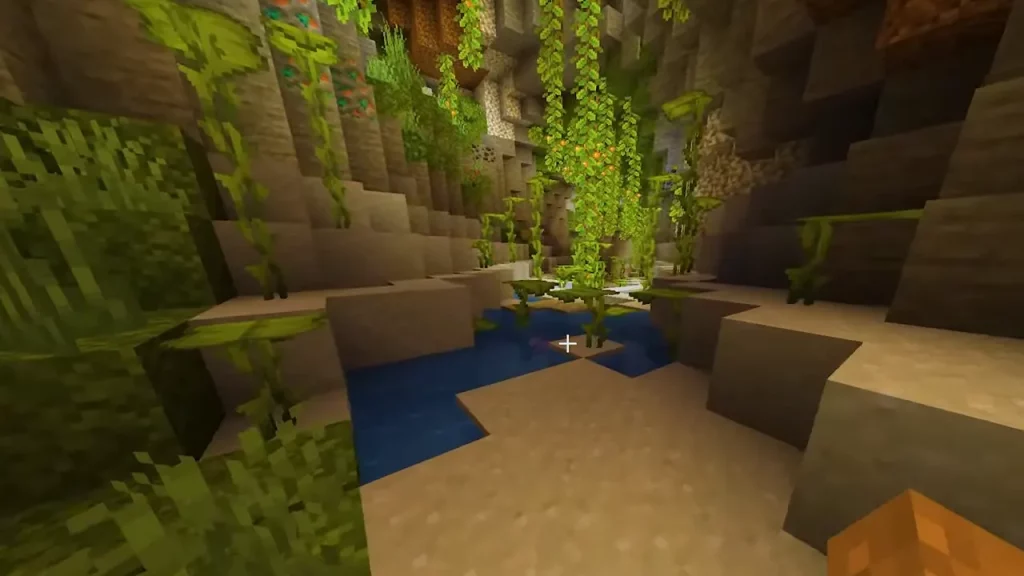
This biome is a great source of harvesting ores in the game. In this secluded underground area, you can get several materials as well as come across enemies. There are other variants of this biome, as well –
- Lush Caves: This variant is rich in flora and fauna, they are found under the azalea trees. Some of the resources you can find here are vines, glow berries, spore blossoms, grass, etc. It also has lakes that consist of clay and tropical fish.
- Dripstone Caves: You can find pointed dripstone and dripstone blocks hanging from the roof above you and sometimes growing from the ground. Additionally, given the open structure of this variant, you can also get ores from this cave.
Mushroom Fields
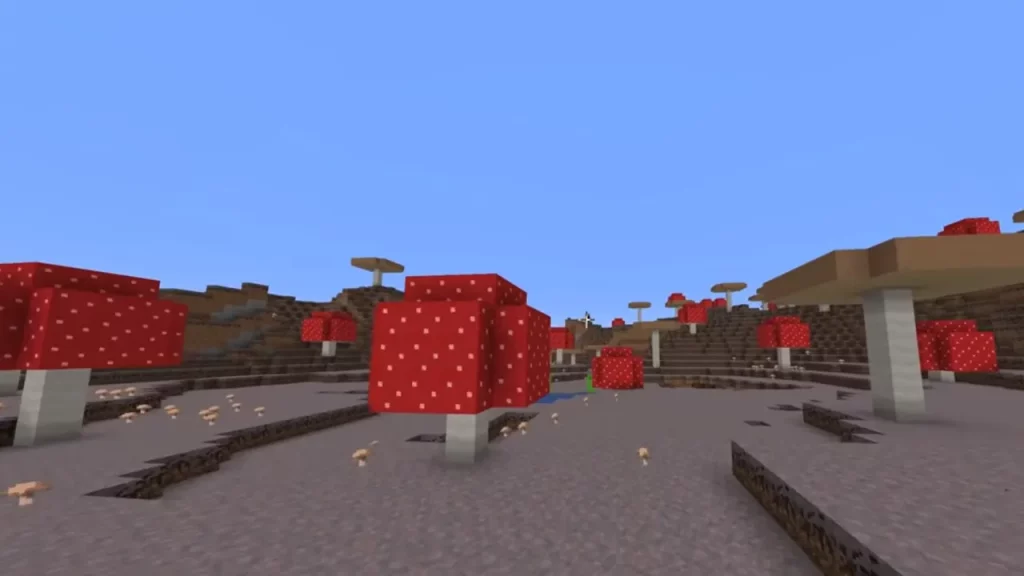
The location of this biome is quite unusual as it is present in the middle of the ocean. The surface of this field uses mycelium as its base structure. It is mostly known and named after the fact that you can find huge mushrooms here. You can freely explore this island as there is no danger of any mobs spawning.
Ocean
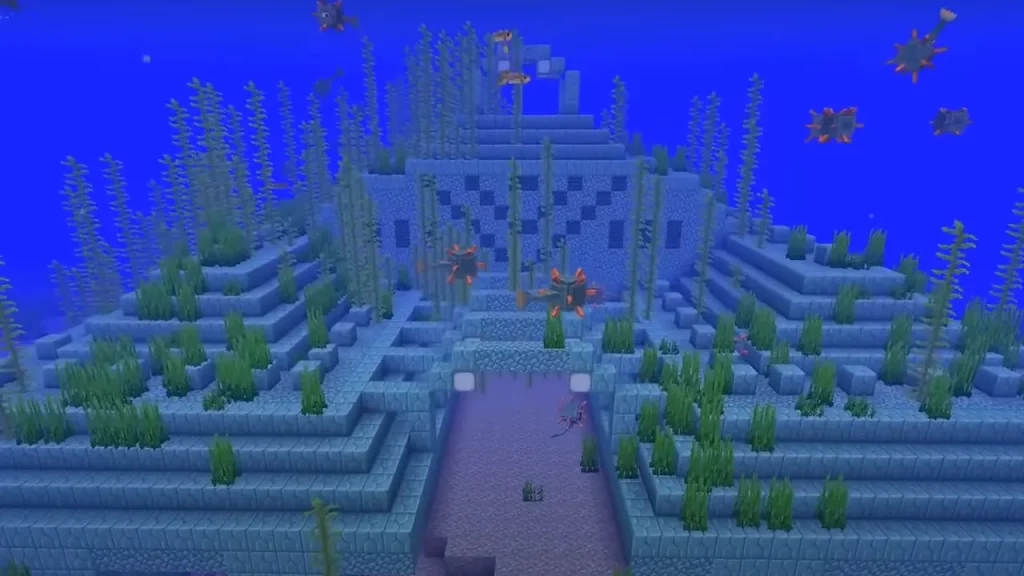
These Oceans in Minecraft have an expansive landscape. It is one of the biomes you will see frequently. You can find mobs like kelp, salmon, and cod spawning in the Ocean biome. We will explain four variants belonging to this biome –
- Frozen Ocean: This biome is filled with broken and scattered pieces of ice and is dark indigo. Mostly, you will find polar bears spawn here.
- Cold Ocean: This variant is dark blue and faces low temperatures.
- Lukewarm Ocean: The base of this ocean is made of gravel and clay. You can find seagrass here and the color of this variant is said to be light blue.
- Warm Ocean: This biome has light green, turquoise-colored water at the surface. Exploring underwater might be difficult considering you might face oxygen deprivation.
Savanna
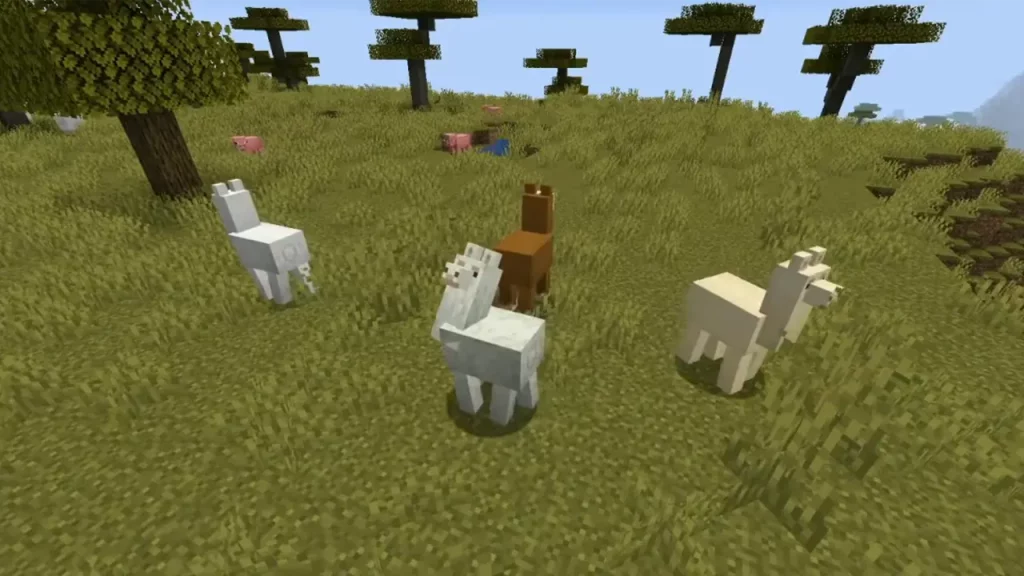
These biomes are filled with resources like acacia trees, oak trees, and creatures like horses and llamas. The landscape of this biome is dry with yellow grass and no rainfall. Occasionally, villages will spawn here. Savanna biomes have two other variants –
- Windswept Savanna: This region is covered with stones, dirt, and huge mountains. Other than the fact that llamas spawn here, it also consists of very dangerous and steep mountains.
- Savanna Plateau: Almost all of the features this variant has are similar to savanna biomes. The only notable difference is that the villages can spawn here.
Nether
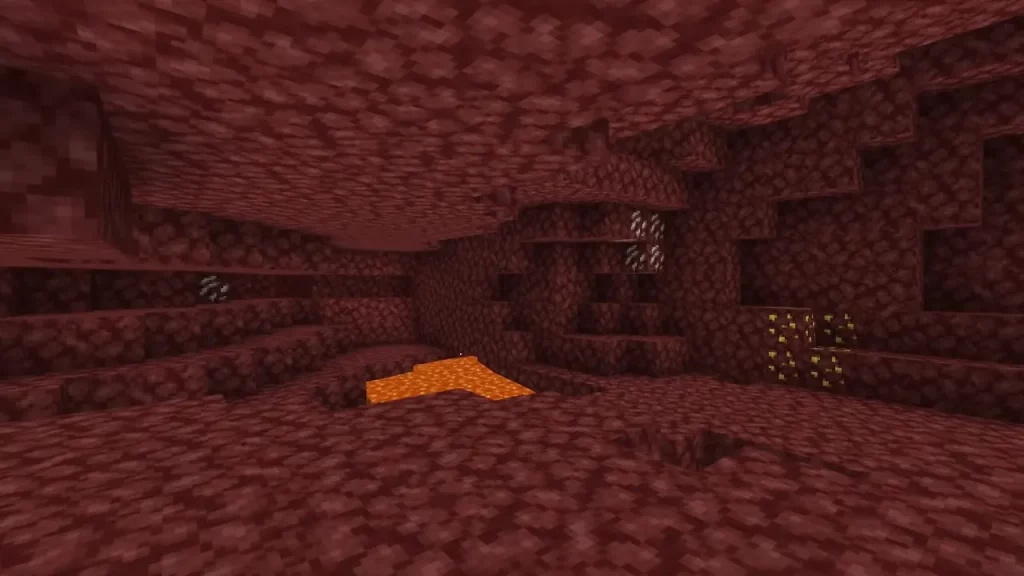
This biomes can only be accessed by using the Nether portal. Unlike the ones mentioned above, it is considered to be quite dangerous. However, this quotient of danger makes it even more exciting to explore. The hostile mobs that spawn here are also considered to be harmful. Additionally, this biome is home to a ton of resources you won’t find anywhere else in the game, for example, Shroomlight, Quartz, Netherrack, Basalt, etc.
The End
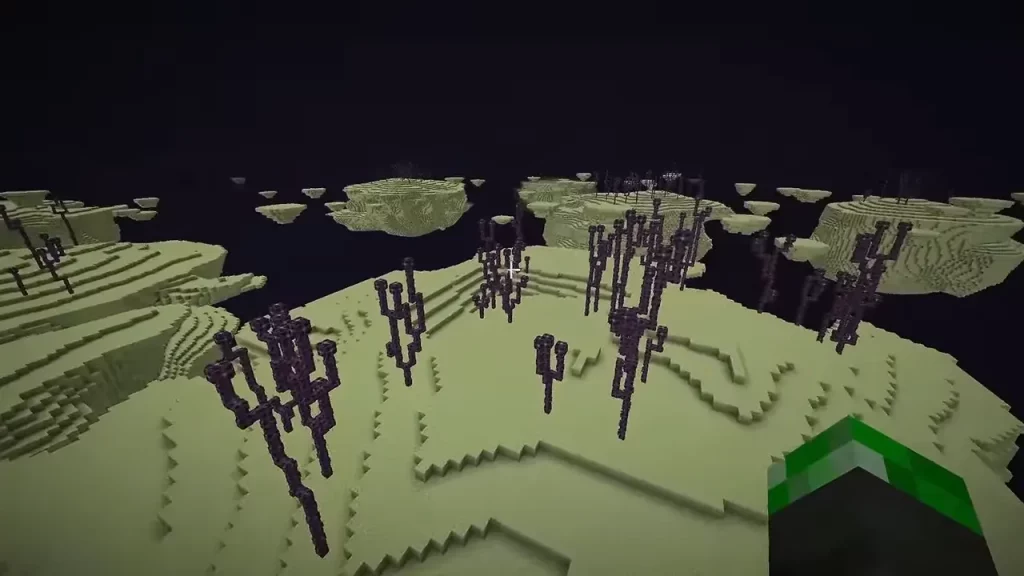
This biome consists of five different regions or islands – End Barrens, End Ocean, End Highlands, End City, and End Islands. Although the game doesn’t end here, it is called ‘The End’ as in this biome you will come across Ender Dragon, an enemy boss that you will have to defeat. You can come out of this biome by either getting defeated by the final boss or killing him during battle.
This is everything you need to know about the different Minecraft Biomes to get started in this game. In case you are interested in using Minecraft mods, here’s a comparison of Optifine vs Sodium that you might want to check out.

